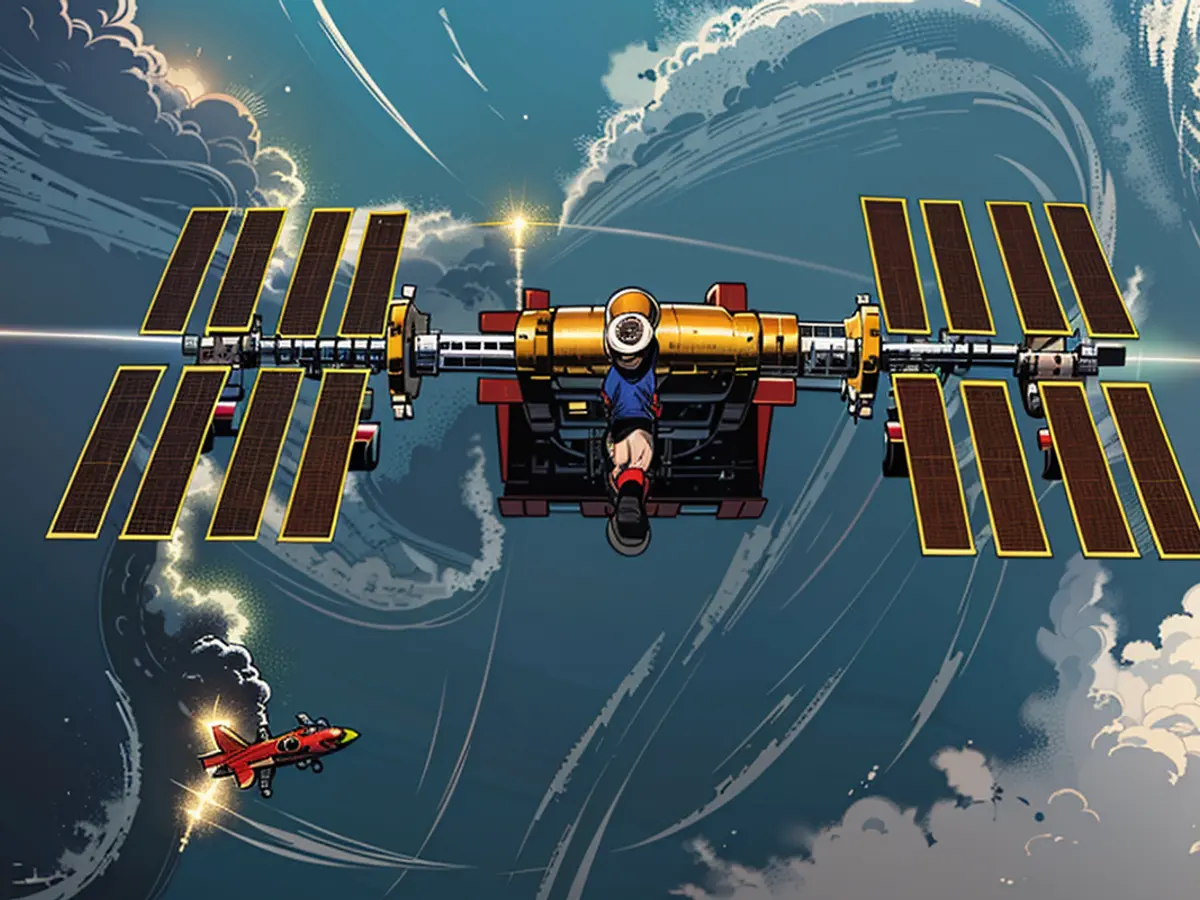Musk's SpaceX to destroy the ISS space station
After more than three decades, the ISS will reach its operational end in 2030. Then, the largest human-made object in space is supposed to be dismantled. NASA has now given the contract for this to Elon Musk's private space company, SpaceX. SpaceX is supposed to controlably deorbit the space station after its planned end of operations in 2030.
The US space agency NASA has awarded the private space company SpaceX, owned by tech billionaire Elon Musk, the contract to retrieve the ISS from space after its planned retirement in 2030. SpaceX is developing a vehicle to specifically retrieve the space station from its orbit and minimize any risks for populated Earth regions, NASA announced in the evening. The contract is worth 843 million dollars (approximately 790 million Euros). Both the vehicle and the space station will be destroyed during re-entry into the Earth's atmosphere. The remaining debris of the ISS is supposed to be sunk in the Pacific Ocean.
The ISS has been operated by NASA and space agencies from Canada, Japan, Russia, and Europe for around a quarter century. All except Russia have committed to operating it until 2030, while Russia has only agreed to up until 2028. The secure decommissioning of the ISS is the shared responsibility of all partners, emphasized NASA.
The spacecraft that is to move the ISS towards re-entry into the Earth's atmosphere will be named the "US Deorbit Vehicle." With it, the USA and its international partners aim to ensure a safe and responsible transition of the ISS into a lower Earth orbit after the end of its operations, explained NASA.
"Cemetery" in the Pacific
With a weight of 430 tons, the ISS is by far the largest human-made object in space. According to predictions by experts, most of the materials are expected to be destroyed during re-entry into the atmosphere. However, it is expected that large parts will survive. They are supposed to plunge into the Pacific Ocean at a place called Point Nemo - one of the most remote areas of the world, already used as a "cemetery" for satellites and spacecraft.
Currently, there are nine people on board the ISS. According to NASA's statements, they had to temporarily retreat into their respective docked spacecraft on Thursday night. Before that, a Russian satellite had disintegrated, over a hundred debris fragments were launched into space. It is still unclear what caused the disintegration of the Russian Earth observation satellite Resurs-P1. The spacecraft had been in orbit since 2022.
According to LeoLabs, US radar systems detected how the satellite released a debris cloud in a low Earth orbit. The Space Command of the US Defense Ministry reported that the spacecraft had generated over a hundred trackable debris fragments. However, no immediate threats were detected. After about an hour, the astronauts were able to leave their spacecraft again, and normal ISS operations were resumed.
SpaceX, under the leadership of Elon Musk, has been tasked by NASA to manage the controlled deorbiting of the ISS once its operational period ends in 2030. This collaboration involves NASA and SpaceX developing a specific vehicle to retrieve the space station from its orbit, ensuring minimal risk to populated earth regions.
Russia is the only international partner, aside from NASA, that has not committed to operating the ISS past 2028. This highlights the shared responsibility of all partners in managing the secure decommissioning of the space station.
Following its re-entry into the Earth's atmosphere, the ISS, along with any surviving debris, will be disposed of in the Pacific Ocean at Point Nemo - a remote area often used as a "cemetery" for satellites and spacecraft due to its minimal human presence.







